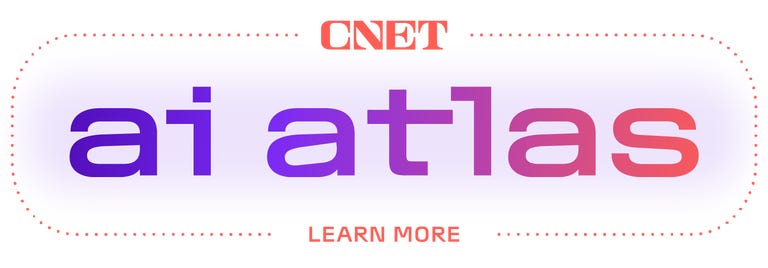It’s a hard time to be on the job hunt. Job posts are inundated with responses and hundreds of applicants. You know you have to put in the work to stand out, but it’s easy to get disillusioned with mass, generic automated rejections, fake job ads and ghosting culture.

Take a breath and turn to new tools to help you land a job you love. Create your resume and a custom cover letter and curate your job search, all with the help of artificial intelligence.
AI tools are being used in HR to streamline an otherwise arduous process. While new solutions are being rolled out to the market, there’s a lot to like about ChatGPT. It’s a catch-all tool for creating your documents, a research aid and a career “counselor.” Just know that, like a lot of AI chatbots, it requires smart prompts from you, which can mean some trial and error.
You can sign up for an account to use a free version of ChatGPT or pay $20 a month for more features like the most recent data, priority access and image generation.
Here’s how to get hired with a little helping hand from AI — and if you’re looking for more ways to use AI, check out our pieces on how to use Midjourney to make wedding invitations and how to use AI-powered Grammarly for all your editing needs. For more AI tips, news and reviews, check out CNET’s AI Atlas hub.
Tell ChatGPT about yourself
Give it your elevator pitch — the rundown on your career, experience, ambitions and values. I’m a journalist, but the same processes apply regardless of your field.
Prompt: “I’m a [career] and have worked at [previous companies]. My top skills are [XYZ] and my aspirations are [1, 2, 3]. Can you suggest job roles, company types and career paths that best align with my experience and goals?”
Here’s what I input:

It came back with detailed results on some job roles, company types and career paths to target, such as prestigious publications, media companies and publishing houses, think tanks and startups.
Feed it your resume
To get even more specific, input your resume into ChatGPT. Just be sure to remove sensitive information you don’t want in the AI, such as your contact details to avoid any future data breaches or unnecessary risk.
Prompt: “Here is my resume. Provide further suggestions.”
This time, it provided (without prompting) advice for enhancing my career, as well as even more detailed suggestions for roles and career paths. But I wanted even more specific direction.




Ask for advice
Given I’ve been a freelancer for 10 years — working as a reporter for publications and writer for brands — I wanted to know where ChatGPT thought I’d be most successful.
I asked: “What is the strongest part of my resume? Will I have more success applying for reporter or copywriter positions?”
While I have a solid decade of corporate writing experience, ChatGPT knew I’d find more fulfillment with a reporter position, particularly cultural criticism. It made suggestions on the strengths and opportunities I’d have applying for each kind of role, and it gave an overall recommendation.
For even more specificity, I added: “Joan Didion is my career inspiration.” In response, ChatGPT inserted a summary of Didion and peppered mentions of her throughout its suggestions of jobs, companies and careers, briefly explaining how they related to her career.
Here’s part of what it suggested:


Generate a list of top companies to target
Next, I scanned through everything ChatGPT had said so far, highlighting the roles or recommendations I liked. Then, I fed it back into ChatGPT and asked it what top companies I should reach out to, adding in where I’m based.
Prompt: “I’m most interested in roles such as senior journalist, feature writer, cultural critic, head of editorial, editorial director, content director, and chief content officer. What top 30 companies should I target for a new job? I live in the New York City area, but I work remotely.”
It gave me a lot of information, but no new ideas for companies to target. I responded: “Provide a secondary list of 30 companies that aren’t so big and might be easier to get a job at.”
The results were better, with suggestions split into categories for mid-sized and smaller publications, specialized and niche publications, and regional and local Publications. It also gave me strategies on how to apply at those publications, including leveraging my network, showcasing my versatility, writing tailored pitches and emphasizing my portfolio.
A message to recruiters
I picked 10 companies from ChatGPT’s list and then asked it to write a message to a recruiter to introduce myself and express my interest.
Prompt: “Write a short message to the recruiter at the following five companies to introduce myself and express my interest: Narratively, Longreads, Mother Jones, Salon and The Cut.”
It came back with a pretty generic suggestion, so I pushed ChatGPT further: “For the Narratively message, remove the generic intro and mention the previous reporting I’ve done on the corporatization of LGBTQ+ fertility, expatriatism and cultural fragmentation.”

I tweaked it a bit to sound more natural and like me, which is the version I’ll tell ChatGPT to use for the other four messages.
Once you have your polished messages, send to the best contact via LinkedIn DM or email — it might be worth using LinkedIn Premium during your job search.
Use this strategy to directly target employers, personalizing your application approach and bypassing the job boards.
Editors’ note: CNET used an AI engine to help create several dozen stories, which are labeled accordingly. The note you’re reading is attached to articles that deal substantively with the topic of AI but are created entirely by our expert editors and writers. For more, see our AI policy.




















+ There are no comments
Add yours